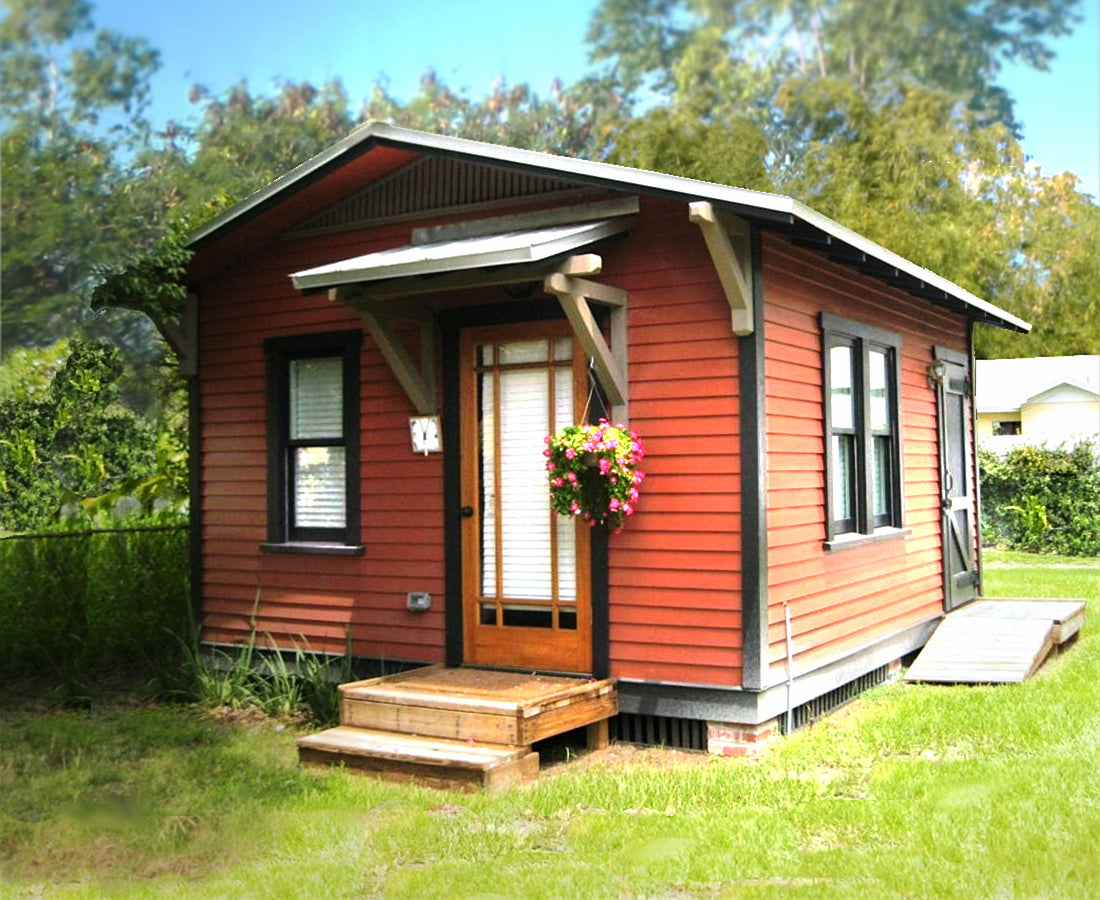Are we missing out on homebuilding opportunities because assumptions about storage and home size are blinding us to the market?
Assumption #1: Human beings come with at least X amount of stuff.
If we're concerned about insufficient storage, we're assuming that residents come with a certain threshold of stuff that's not accounted for in the design that we're examining.  But think back to what you owned when you had just left school. Did you come with the same belongings you have now?
But think back to what you owned when you had just left school. Did you come with the same belongings you have now?
Our possessions fluctuate with our circumstances. Starting out, starting over, returning from the military to civilian life... You get the picture. We don't always have much stuff. Or we might choose a different form of abundance as our way of life.
People without a lot of belongings are our customers, too. What others read as "limited storage" might be "just-right storage" for them.
Assumption #2: People need room to store all their stuff.
Assumption #3: Builders need to provide in-home storage for the stuff we keep.
The self-storage industry might have something to say about this. According to peer-to-peer storage company Neighbor, the U.S. had two billion square feet of rentable self-storage space in 2021. That's a lot of space for Americans who want to store belongings outside of their homes.
And there are other options, closer at hand. Attics, dry basements, outbuildings, and furniture, for example. These are normal options that Americans take advantage of without thinking too hard. IKEA, for instance, has entire product lines that help us make more productive use of space.
Larger closets and built-in storage might be attractive, but they add cost to the home. And that cost is more noticeable when we're building or buying houses at the smaller end of the scale. It pays to ask where the boundary is between must-have in-home storage and nice-to-have, for the customers we serve.
Assumption #4: If we don't provide large closets, people won't choose these homes.
This is a common blind spot for builders. And an understandable one. When builders choose what designs to turn into homes, they essentially place a bet about what buyers or renters want. For a bet like that, the middle of the market seems safest, right? Don't most people want more storage space?
They might. And this could be a fine approach if we were the only homebuilder in the market. But what if our competitors think the same way? (And they do.) We'll find ourselves contending for the same customers that our competitors address. And you know what happens then. Competition erodes profit.
There's another way to look at the question, and it has to do with tradeoffs. There's an opportunity cost to every feature one adds to a home. Adding storage can mean eliminating something else that a tenant or buyer might value as much or more. When everyone's building walk-in closets for customers with storage needs, who's building the picket fence or planting the trees that make site-responsive customers fall in love with a place?
Customers make these tradeoffs all the time when they have to choose what home they will rent or buy. The key to doing well as homebuilders is discovering which customer needs are under-served in the market and building homes that meet those needs.
And it might not be closet space. It might be better lighting, walkability, or a neighborly living arrangement that's hard to come by in the current market. For some customers, big storage isn't a must, nor is it the highest priority on the list.
 Only 7% of single-family home construction in the U.S. last year consisted of homes under 1,400 square feet,* despite the fact that 63% of American households consist of just one or two persons.** Less than 45% of existing housing stock is under 1,500 square feet in size.*** If you see an opportunity in that gap, let us help you identify the right small-sized house plan for a homebuilding project. Big or small, we'll help you make your dream house real.
Only 7% of single-family home construction in the U.S. last year consisted of homes under 1,400 square feet,* despite the fact that 63% of American households consist of just one or two persons.** Less than 45% of existing housing stock is under 1,500 square feet in size.*** If you see an opportunity in that gap, let us help you identify the right small-sized house plan for a homebuilding project. Big or small, we'll help you make your dream house real.
Warm regards,
Jennifer Krouse, Founder and CEO
* U.S. Census Bureau, "Annual Characteristics of New Housing - Square Feet"
** U.S. Census Bureau, "Historical Households Tables - Table HH4-Households by Size"
*** U.S. Census Bureau, "American Housing Survey" - 2021
